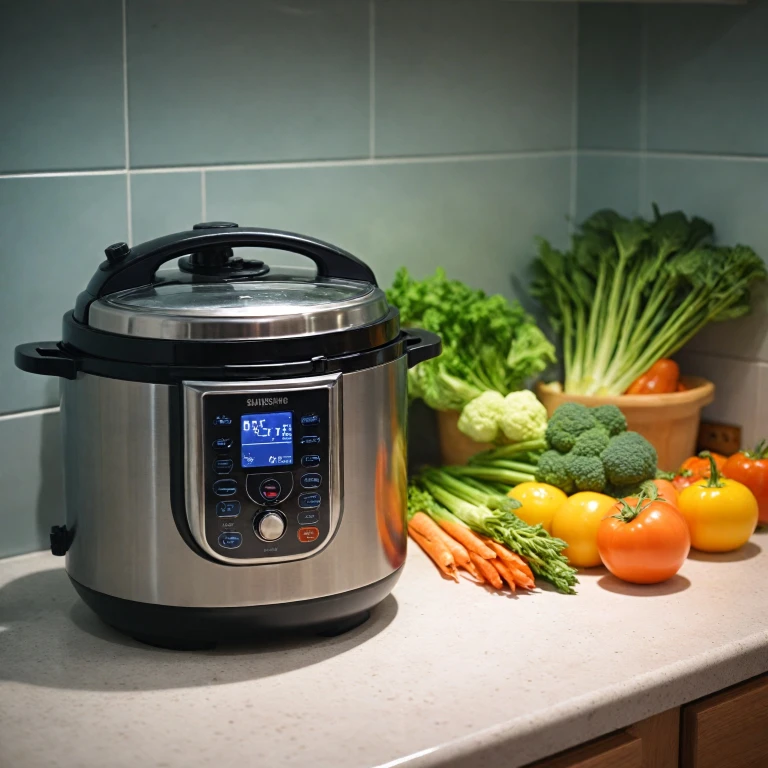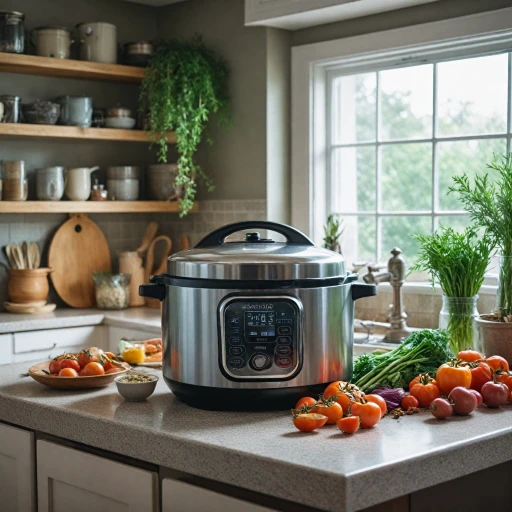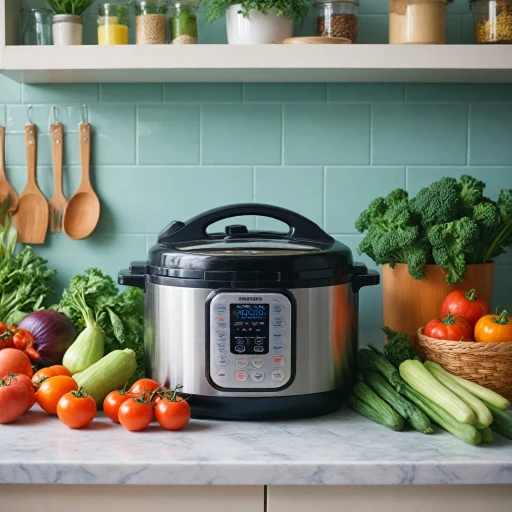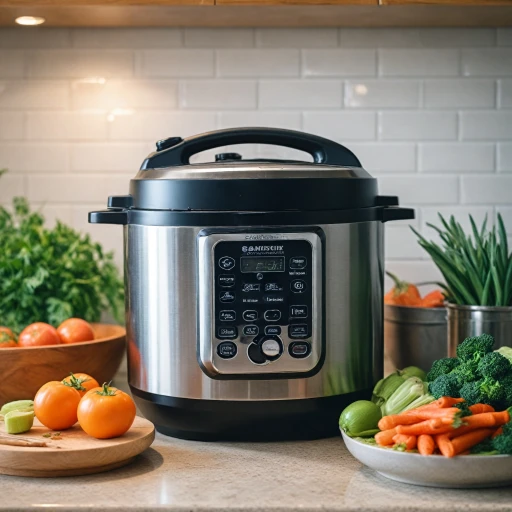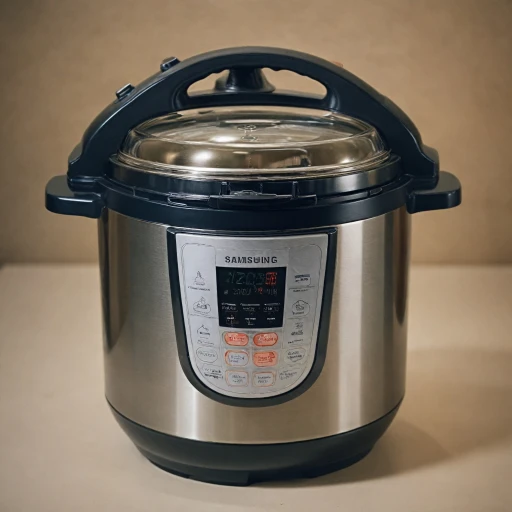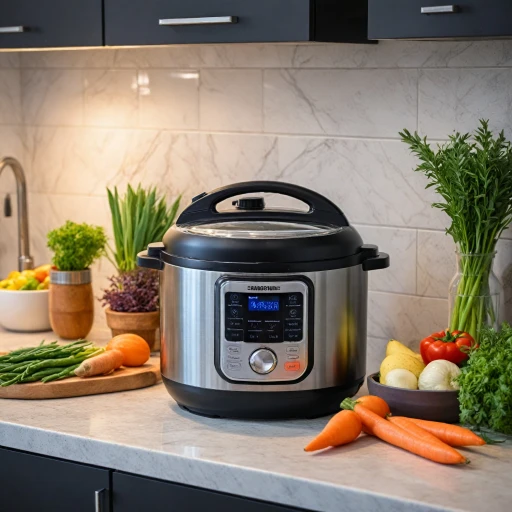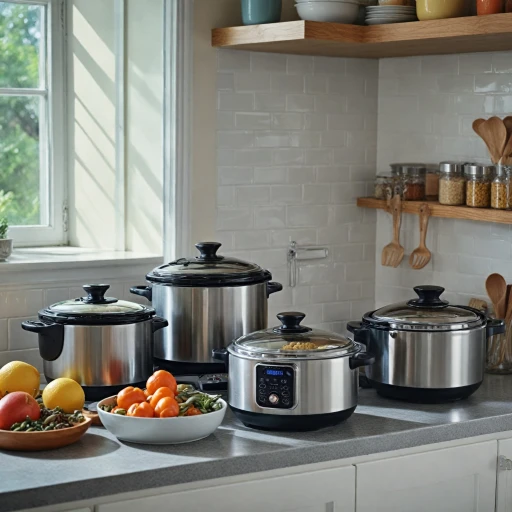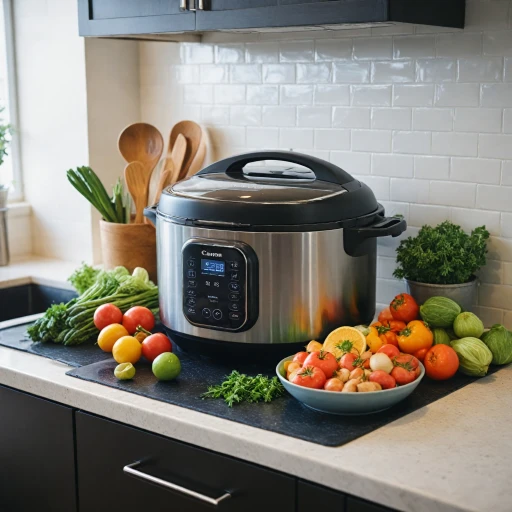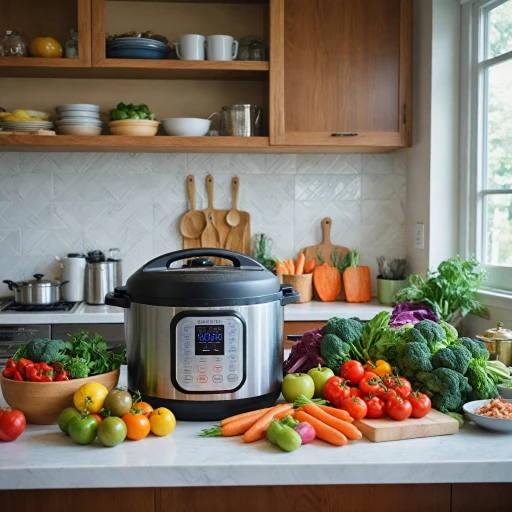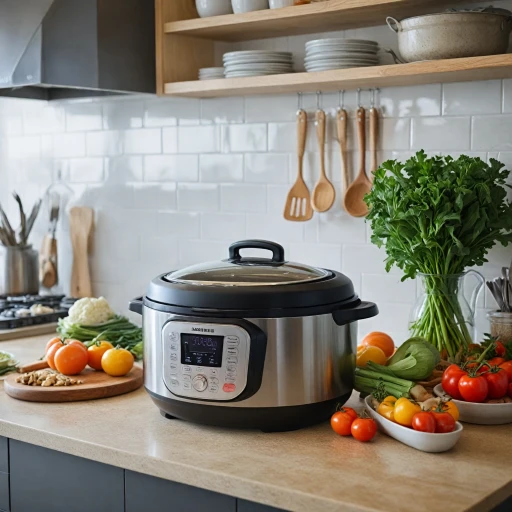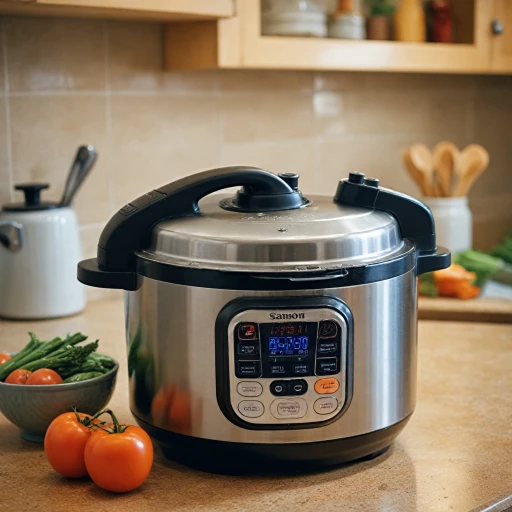
How Electric Pressure Cookers Work
Unveiling the Mechanics of an Electric Pressure Cooker
Electric pressure cookers have revolutionized the kitchen, making cooking a seamless experience for enthusiasts and professionals alike. At their core, these appliances utilize high-pressure steam to cook food rapidly and efficiently. But how exactly does this process work? Imagine sealing food in a pot with a specific amount of water. When the cooker heats up, steam builds up, raising the pressure inside the pot significantly. This increase in psi pressure is what enables quicker cooking times compared to traditional methods. ### Key Components in Action- Pressure Build-Up: As the pot heats, water turns into steam, elevating the temperature and pressure. This environment is ideal for cooking foods like beans and meats in a fraction of the time it usually takes.
- Regulated Cooking: Electric pressure cookers come equipped with various control features that maintain the pressure at optimal levels. This ensures that food is cooked evenly without the risk of over-pressurizing.
- Release Methods: Once the food is ready, pressure needs to be released. The two primary methods include quick release and natural release, each having its own benefits depending on the specific recipes being cooked.
Benefits of Using an Electric Pressure Cooker
Advantages of Pressure Cooking
Electric pressure cookers have revolutionized the kitchen landscape by offering substantial benefits to everyday cooking. These innovative appliances utilize steam under high pressure to drastically reduce cooking times and enhance the flavor of your meals. This means you can enjoy your favorite dishes, like beans or stews, in much less time than traditional cooking methods would require. One of the standout features of electric pressure cookers is their ability to cook food evenly and thoroughly. By pressurizing steam, the cooker can surround the ingredients with high heat, allowing even cooking and helping to retain essential nutrients. This method is particularly beneficial when cooking tough cuts of meat or dried beans, which require longer cooking times otherwise.Convenience and Time-saving
For busy individuals, the time-saving aspect of pressure cooking cannot be overstated. This appliance can reduce the cooking time of some recipes by up to 70%. For example, what used to take hours on the stove can now be achieved in a matter of minutes inside the pressurized pot. The instant pot is an excellent example of this efficiency, as it allows you to prepare complicated meals quickly without compromising on flavor or texture. Furthermore, electric pressure cookers offer programmable settings that make the cooking process more convenient. Users can set the cooker to start at a specific time, ensuring dinner is ready when they get home. This feature eliminates the need for constant supervision, making it easier to manage one’s time effectively.Energy Efficiency and Culinary Versatility
Pressure cookers are also more energy-efficient than traditional cooking methods. By reducing the cooking time, they consume less electricity, leading to lower utility bills and a reduced environmental footprint. Electric pressure cookers are not only about quick meals; they are versatile enough to replace multiple kitchen appliances. From slow cooking to sautéing and even steaming, these cookers can perform a variety of functions, making them a valuable addition to any kitchen. With the appropriate use of release methods such as quick release or natural release, home cooks can try a multitude of recipes, expanding their culinary repertoire and enhancing their cooking experiences. For more in-depth information on the mechanics of how electric pressure cookers operate and continue to provide these advantages, refer to the comprehensive guide available: understanding the mechanics of an electric pressure cooker.Safety Features of Modern Electric Pressure Cookers
Prioritizing Safety with Modern Electric Pressure Cookers
Modern electric pressure cookers have come a long way in ensuring safe and efficient pressure cooking. They are equipped with advanced safety features that minimize risks while maximizing convenience.
- Instant Pressure Release Methods: Electric pressure cookers typically offer two release methods: quick release and natural release. The quick release allows steam and pressure within the pot to escape rapidly, thus reducing cooking time significantly. On the other hand, the natural release lets steam dissipate gradually, often producing more tender food. Both methods are instrumental in handling high pressure safely.
- Built-in Safety Mechanisms: Contemporary models often include pressure sensors that regulate the cooker’s pressure to prevent overheating. These sensors monitor the psi pressure, ensuring the cooker maintains optimal conditions for diverse recipes, from beans to delicate meats. An automatic locking lid prevents accidental openings under high pressure, while heat-resistant handles reduce the risk of burns.
- Overheat Protection: Most units are programmed to shut down or adjust heat levels if the pot begins to overheat, thus safeguarding both the appliance and the user. This feature is particularly beneficial when high pressure is involved for extended cooking times.
- Water Level Indicators: The necessity to fill your cooker with the proper amount of water cannot be overstated. Insufficient water can lead to a dried-out pot and excessive pressure. Electric pressure cookers usually have minimum and maximum water level markings to help users add the correct volume, maintaining both safety and the quality of the food.
- Time Management Alerts: These cookers often come with timers and alarms that notify users when the cooking process is complete, aiding in preventing overcooked meals. Knowing the exact cooking time for different foods ensures that your dishes turn out perfectly each time.
When considering an electric pressure cooker, these features not only add a layer of safety but also enhance the cooking experience. For more insights into finding the best equipment for your kitchen, consider exploring top electric pressure cookers on the market today.
Versatile Cooking with Electric Pressure Cookers
Explore the Culinary Diversity
Electric pressure cookers open up a world of culinary possibilities. Their ability to maintain consistent high pressure allows users to cook a wide array of dishes more efficiently than traditional methods. From stews and soups to pastas and risottos, the high-pressure environment speeds up cooking time by increasing the boiling point of water, making it ideal for time-sensitive recipes. Using a pressure cooker, you can tenderize tough cuts of meat, turning them succulent in about half the time of conventional methods. Imagine cooking a pot roast in under an hour without sacrificing any flavor or tenderness. Moreover, whole grains and beans, notorious for their lengthy cooking periods, can be pressure cooked to perfection in a fraction of the time, retaining their hearty texture and nutrients. Electric pressure cookers excel in preparing one-pot meals, where you can „add“ all your ingredients, seal the lid, set the timer, and let the cooker do the rest. Many models come with pre-programmed settings for cooking beans, rice, porridge, or even yogurt, taking the guesswork out of determining the precise psi pressure or heat levels.Versatility in Cooking Techniques
Electric pressure cookers are not limited to pressure cooking alone. Many models offer multiple functionalities. For example, you can sauté your ingredients in the same pot before switching to pressure cooking. This multifunctionality not only saves you „time“ but also minimizes cleanup by reducing the number of pots and pans involved in the preparation process. Additionally, release methods like the „quick release“ and „natural release“ provide control over the cooking process. Quick release is ideal for stopping the cooking immediately to prevent overcooked dishes, while natural release allows the pressure to release slowly, which is beneficial for delicate foods that need gentle handling. The range of „recipes“ available for electric pressure cookers continues to expand, largely fueled by cooks exploring new dishes and sharing experiences. Whether you want to bring international cuisines to your kitchen, introduce healthier meal options, or simply save „minutes“ of cooking "time," electric pressure cookers are an invaluable asset in modern cooking. In essence, electric pressure cookers offer a versatile, time-efficient, and convenient way to enjoy home-cooked meals with family and friends.Tips for Choosing the Right Electric Pressure Cooker
Key Considerations When Selecting Your Electric Cooker
Purchasing the ideal electric pressure cooker can be a game-changer in your culinary experience. However, several factors need thoughtful consideration to make the best choice. Here’s a breakdown to help you make an informed decision.- Capacity and Size: One primary consideration is the size of the pot. Standard sizes range from 3-quart to 8-quart options, accommodating either single servings or larger family meals. Think about how much food you plan to cook and choose a capacity that aligns with your needs.
- Cooking Functions: Modern cookers often come with a multitude of cooking options, such as sauteing, steaming, and slow cooking. Opt for a model with varied functions to maximize versatility and cooking convenience.
- Pressure Levels: Check if the cooker offers different pressure levels. While some recipes work best under high pressure, others might require a more delicate touch. Dual pressure settings—high and low—can give you more control over the cooking process.
- Safety Features: To ensure a safe cooking environment, look for safety features like locking lids and automatic pressure release. These features are vital for preventing accidental burns and spills.
- User Interface and Controls: Consider models with intuitive displays and user-friendly controls. Digital interfaces often provide preset cooking times and programs ideal for making pressure cooking more straightforward.
- Maintenance: Easy-clean features, such as dishwasher-safe inner pots and removable lids, can save time and effort during cleanup. The ability to clean the cooker efficiently will extend its lifespan significantly.
Troubleshooting Common Issues with Electric Pressure Cookers
Common Challenges and How to Solve Them
Electric pressure cookers are remarkable devices that can significantly reduce cooking time and enhance food flavors. However, users may encounter a few common issues. Understanding these challenges and how to address them will ensure you get the most out of your kitchen appliance.
Pressure Won't Build
If the pressure cooker is taking too long to build pressure or isn't building pressure at all, ensure the pot is filled with the adequate amount of water. The liquid is essential for generating steam pressure, which is the underlying mechanism for pressure cooking. Always consult the food instructions or recipes for the appropriate liquid levels, and check the seal ring and the vent pipe for any clogs or improper sealing.
Overcooked or Undercooked Food
For perfectly cooked dishes, knowing the right cooking times and settings is crucial. High pressure and varying stroke width settings impact cooking times significantly. If you find your beans mushy or your meats too tough, adjust the time based on the weight and type of the ingredients. Generally, use a natural release method for meats to preserve tenderness, whereas quick release works well with vegetables and grains.
Steam Leaking from Lid
A leaking lid might be due to misalignment or a degraded gasket. Ensure the lid is placed properly and the sealing ring is undamaged. Replace any worn-out parts that affect the seal, as they are crucial for maintaining the high psi pressure needed for cooking.
Cooker Not Turning On
If the pressure cooker doesn't power on, confirm that it's plugged in and the outlet is working. Some models come with built-in safety features that require specific steps to start cooking. Refer to the manual to ensure settings are correct and the pot is properly seated.
By following these troubleshooting tips, you can overcome common issues and make the most of your electric pressure cooker. Remember that practice and familiarity with your appliance's features and safety systems will lead to exceptional and consistent culinary results.
